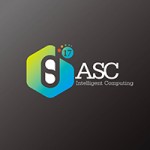 This year’s edition of the Asian Student Cluster Competition (ASC) is the largest competition of its kind in the world, with 20 teams of university undergrads battling each other, themselves, and the world’s fastest supercomputer, Sunway TaihuLight, to win the Asian Cluster Crown*.
This year’s edition of the Asian Student Cluster Competition (ASC) is the largest competition of its kind in the world, with 20 teams of university undergrads battling each other, themselves, and the world’s fastest supercomputer, Sunway TaihuLight, to win the Asian Cluster Crown*.
But more than just bragging rights are at stake here in sunny Wuxi (pronounced “Woo Shee”), China. The ASC, now in its sixth year, is the only cluster competition to offer cold, hard cash to the victors in a variety of categories – more on this later.
Design, build, tune, repeat
The essence of a student cluster competition is for each team to build the fastest cluster possible, a cluster that will allow them to run the proscribed applications and benchmarks while not going over the 3,000W hard power cap. Teams will tune and optimise each application to wring the most performance possible out of the code. The teams then race their clusters live at ASC17 to see who has done the best job.
In this competition, the teams can select from a range of nodes provided by competition sponsor Inspur. It’s up to them whether they go for a large node count, or fewer nodes and perhaps more accelerators. Going with a large number of accelerated nodes, for example, could be a winning move, but only if they’re confident they can make the applications run efficiently on them.
The teams are taking Monday to design and burn in their configurations – making sure that they have the right combination to tackle all of the apps while staying under the dreaded power cap. Tomorrow they will begin the competition in earnest.
Grueling mix of applications
This cluster battle is going to challenge students like few others. They’ll have to run apps on not one, not two, but three different processor and system architectures. These architectures include their own Xeon CPU or CPU/GPU clusters, Intel Knights Landing-based nodes, and the fastest supercomputer in the world, the Sunway TaihuLight system. Let’s take a closer look at their tasks:
Benchmarks: It’s the usual HPL (LINPACK) and HPCG, which are staples for every cluster competition. One way to look at these two benchmarks is like performance bookends. The HPL score will show probably the highest performance a particular machine can aspire to, while HPCG is a torture test that will show a machine in its probable worst light.
Mystery App: Like the title says, it’s a mystery. I’ve probed a bit, but haven’t heard a whisper concerning the identity of this app.
Falcon: As all of you gene sequencers know, each sequencing can generate millions of gene fragments. Once you’re finished with the sequencing, you’re left to assemble all of these fragments into a complete and correct genome and chromosome sequence. You know what’s handy for that task? Falcon. As part of the ASC17 challenge, student teams will be optimizing Falcon on the clusters that they’ve built. Neat, eh?
LAAMPS: For those who aren’t big into molecular dynamics simulation software, LAAMPS stands for “Large-scale Atomic/Molecular Massively Parallel Simulator” and it’s very useful when you’re doing chemistry, materials research, and, of course, molecular biology. The challenge for the students as ASC17 is to optimise LAAMPS for the Intel Knights Landing platform. Each team will use a remote node and do their damnedest to get the highest performance on a set of LAAMPS simulations.
PaddlePaddle: While this app sounds like a cheap kid’s toy, it’s actually a cutting-edge AI application. Baidu designed PaddlePaddle to be an easy and intuitive way to load data and specify model structure. It supports several neural network architectures and makes it easy to build complex models. The students will be using PaddlePaddle to build a predictive traffic model for a particular city on a particular day.
MASNUM: This is a third-generation oceanic wave model developed by China and nominated for a Gordon Bell Prize at SC. It’s perhaps the best wave predictive model in use today. Its hindcasting has been validated over several years with the use of altimeter and buoy data in the North Pacific. Students will be using the largest supercomputer in the world, the Sunway TaihuLight, to optimise MASNUM over thousands of cores.
Interview: If all of the above application work weren’t enough, the students will also have to explain their system architectural choices, configuration decisions, and application twiddling to a panel of experts who are looking to see what they really know and what they’re just BS’ing. Students who go the BS’ing route typically have a highly uncomfortable experience in the interview room.
Gold at the end of the rainbow
The teams that make it through the ASC17 gauntlet won’t go home with just a shiny trophy and HPC street cred; they’ll also head out with fatter wallets. Or at least their schools will.
The overall winner of the ASC17 competition will receive a cool ¥100,000 (about $15,000) for their efforts. The second-place team will haul in about $7,500 and the team with the highest LINPACK number will take $1,500. There are also cash prizes for “Application Innovation,” the “ePrize,” and the most popular team.
We’ll be covering all of the ins and outs of this competition like a warm quilt on your grandma. Upcoming articles will look at all 20 of the teams competing, their configurations, and their triumphs and tragedies as they chase after cluster competition immortality. ®
* As always, we should point out that this is a metaphor, and there isn’t actually a crown. Sorry to any HPC whizkids who’ve prepared a velvet pillow and spotlight.
Posted In: Latest News, ASC 2017 Wuxi
Tagged: supercomputing, Student Cluster Competition, HPC, LINPACK, ASC17, Sunway TaihuLight, ASC 2017
